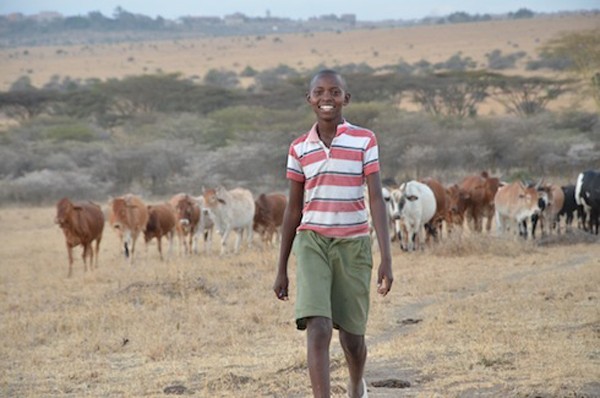Richard Tuere, 13, is responsible for looking after his families cattle. No easy task when you live next to the Nairobi National Park and lose cattle to predation by lions on a monthly basis.
However, Richard noticed that lions never struck the homesteads where someone was either awake or walking around with a torch. He also knew that lions are inherently fearful of people and deduced that the lions were avoiding the areas with torches as they associated the light with people.
Richard then decided that he would take the bulbs from broken torches, and rigged up an automated lighting system of four or five torch bulbs around the family’s cattle kraal. He wired the lights to a box with switches, and to an old car battery charged with a solar panel. Instead of pointing inwards towards the cattle, the lights point outward into the darkness, and they flash in sequence giving the impression that someone is walking around the kraal.

AfriGadget has more:
“In the two years that his lion light system has been operating, the Turere family has had no predation at night by lions. To Richard he was just doing his job – protecting the herds. His father is beaming, stock thieves will also think twice about visiting a homestead where it appears as if someone is awake. Five of the neighbours noticed that they were getting hit by lions but not the Turere homestead. Richard has already installed the lion lights system in their bomas too.
For conservation and human wildlife Conflict management, this simple innovation is a breakthrough. The Kenya Wildlife Service Report that human wildlife Conflict has cost the government Ksh71 million in compensation in 2011 alone. In Kitengela consolation of several million has been paid to the community for the loss of livestock to lions alone.
This figure will rise dramatically as new legislation comes into play. Richards little device of four or five lamps, some wires and a few batteries costs less than ten dollars and has saved his father tens of cattle and therefore it has saved donors several thousand dollars in consolation. The alternative being applied elsewhere is the construction of lion proof fences but at the cost of $1 000 just for materials, then there’s the cost of transport and labour it is way out of the price range fore the average pastoralist. Richard’s invention is cheap, local, cost effective and easy and quick to install and to maintain.”


